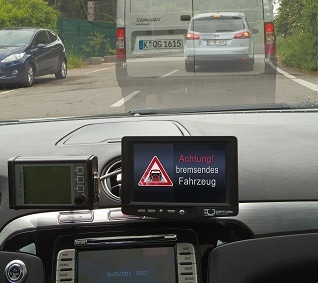Ford demos car communication via LTE modules
A research project conducted by Ford has demonstrated that LTE is highly suitable for automotive communications applications. The findings of the CoOperative Card Extended (CoCarEX) research project were demonstrated yesterday in Dusseldorf, Germany and proved that LTE latency is low enough for it to provide time-critical driver assistance functions.
May 26, 2011

A research project conducted by Ford, Ericsson and Vodafone has demonstrated that LTE is highly suitable for automotive communication applications. The findings of the CoOperative Cars Extended (CoCarX) research project were demonstrated Wednesday in Dusseldorf, Germany and proved that LTE latency is low enough for it to provide time-critical driver assistance functions.
The CoCarX project began in 2009 with the aim of developing the systems and infrastructure that would enable vehicles to update each other information regarding driving conditions hazards and traffic .
In the test, using an Ericsson powered Vodafone LTE network, an emergency braking manoeuvre performed on a Ford S-Max test car immediately sent a hazard warning signal to another Ford S-Max set up to receive it. The sub-100 millisecond signal propagation time of was considered low enough for it to be deemed effective for providing effective traffic safety. Standard traffic messages were also sent to both cars.
“The notion of talking cars may immediately bring to mind thoughts of children’s movies, but the reality is that vehicles capable of speaking the same language could result in significant safety and convenience benefits for drivers,” said Christian Ress, Ford’s connectivity technical expert, in a statement
In addition, a video stream was transmitted to the cars, demonstrating that LTE networks offer sufficient bandwidth for in-car entertainment purposes. The fact that one LTE connection can be used for multiple concurrent services is another benefit with priority decided by Quality of Service mechanisms.
Another advantage that LTE brings is that due to its efficiency it can fit more concurrent users into any given cell than is possible with 3G networks, making it a robust solution for highly crowded areas. Ford said that it believes that this could potentially reduce the frequency of accidents, aide traffic flow and ease road congestion, and in turn reduce CO2 emissions.
While the demo was a success Ford would not detail any plans for releasing LTE enabled cars.
“It is “only” a research project where we successfully tested that LTE can be used for car to car communication. At this stage there are no concrete product plans,” Monika Wagener, head of communications at Ford Research told Telecoms.com.
Germany already has widespread LTE coverage, courtesy of Vodafone D2, which launched a service in December 2010. Telecoms.com spoke to Vodafone chief technology officer Hartmut Kremling ahead of the recent LTE World Summit 2011.
The fourth annual LTE North America Conference takes place in Texas, US, November 8-9
About the Author(s)
You May Also Like








.png?width=300&auto=webp&quality=80&disable=upscale)


_1.jpg?width=300&auto=webp&quality=80&disable=upscale)


.png?width=800&auto=webp&quality=80&disable=upscale)